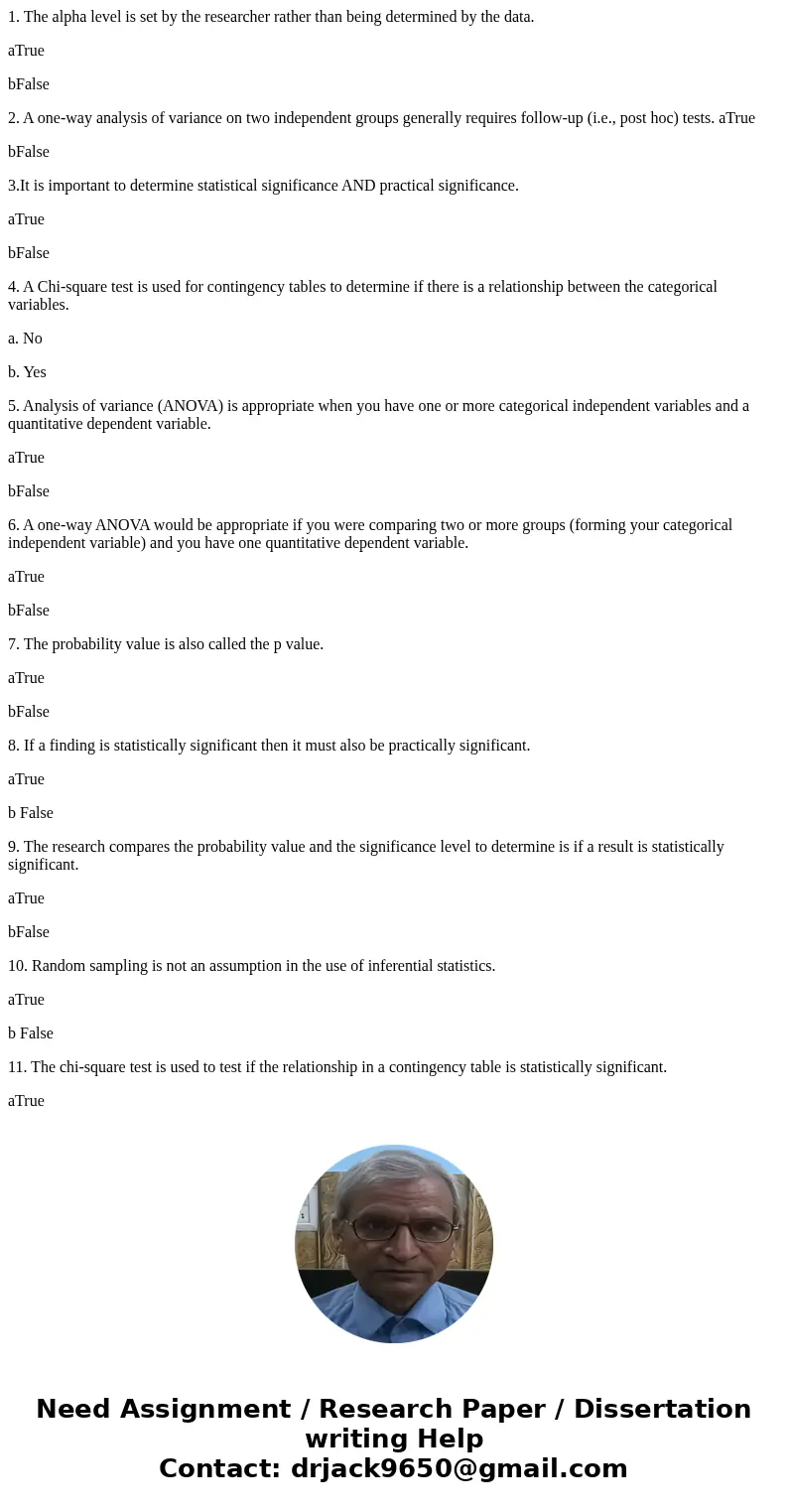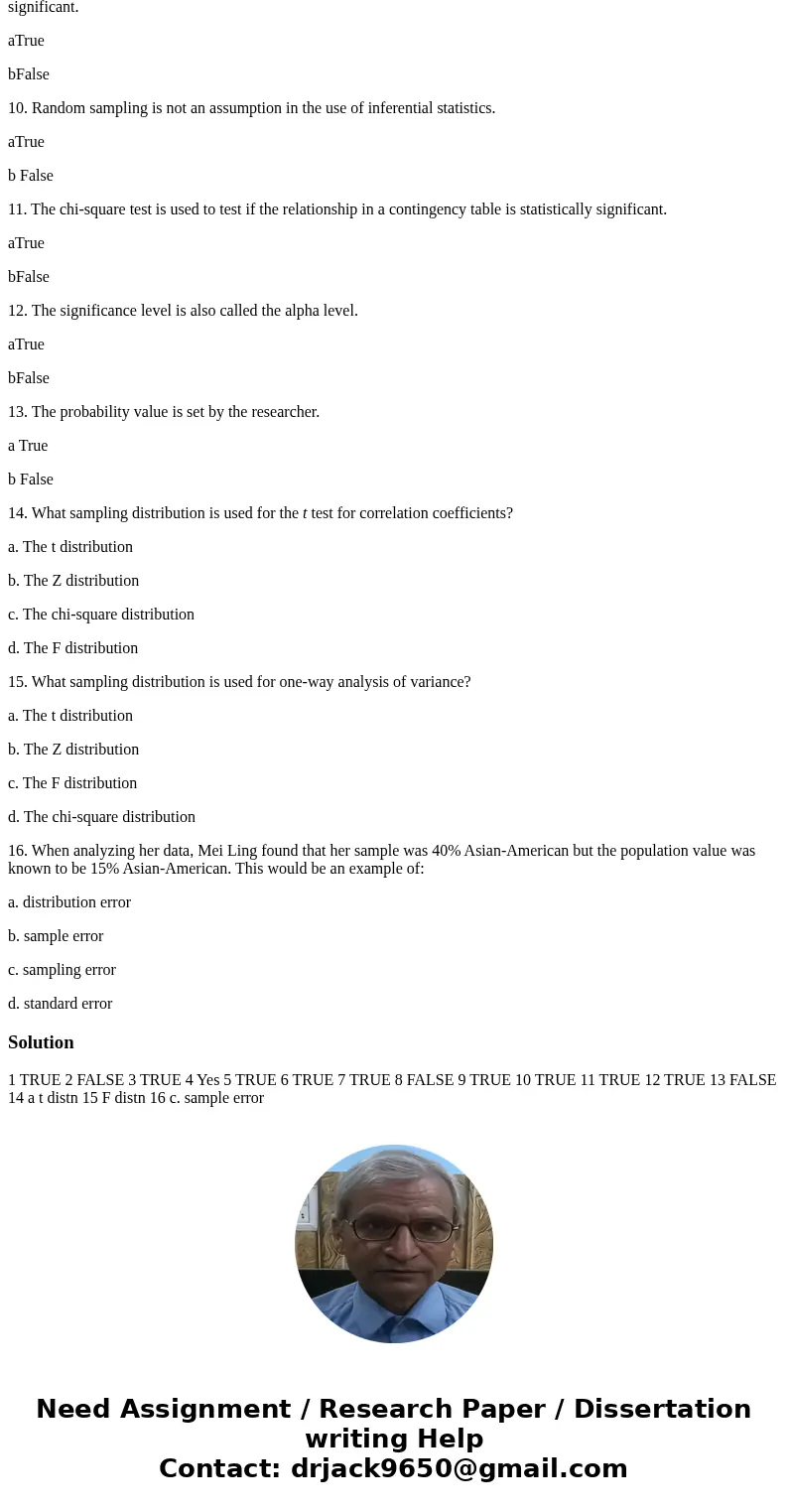1 The alpha level is set by the researcher rather than being
1. The alpha level is set by the researcher rather than being determined by the data.
aTrue
bFalse
2. A one-way analysis of variance on two independent groups generally requires follow-up (i.e., post hoc) tests. aTrue
bFalse
3.It is important to determine statistical significance AND practical significance.
aTrue
bFalse
4. A Chi-square test is used for contingency tables to determine if there is a relationship between the categorical variables.
a. No
b. Yes
5. Analysis of variance (ANOVA) is appropriate when you have one or more categorical independent variables and a quantitative dependent variable.
aTrue
bFalse
6. A one-way ANOVA would be appropriate if you were comparing two or more groups (forming your categorical independent variable) and you have one quantitative dependent variable.
aTrue
bFalse
7. The probability value is also called the p value.
aTrue
bFalse
8. If a finding is statistically significant then it must also be practically significant.
aTrue
b False
9. The research compares the probability value and the significance level to determine is if a result is statistically significant.
aTrue
bFalse
10. Random sampling is not an assumption in the use of inferential statistics.
aTrue
b False
11. The chi-square test is used to test if the relationship in a contingency table is statistically significant.
aTrue
bFalse
12. The significance level is also called the alpha level.
aTrue
bFalse
13. The probability value is set by the researcher.
a True
b False
14. What sampling distribution is used for the t test for correlation coefficients?
a. The t distribution
b. The Z distribution
c. The chi-square distribution
d. The F distribution
15. What sampling distribution is used for one-way analysis of variance?
a. The t distribution
b. The Z distribution
c. The F distribution
d. The chi-square distribution
16. When analyzing her data, Mei Ling found that her sample was 40% Asian-American but the population value was known to be 15% Asian-American. This would be an example of:
a. distribution error
b. sample error
c. sampling error
d. standard error
Solution
1 TRUE 2 FALSE 3 TRUE 4 Yes 5 TRUE 6 TRUE 7 TRUE 8 FALSE 9 TRUE 10 TRUE 11 TRUE 12 TRUE 13 FALSE 14 a t distn 15 F distn 16 c. sample error

 Homework Sourse
Homework Sourse